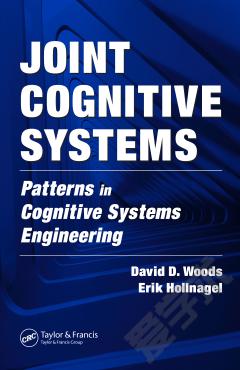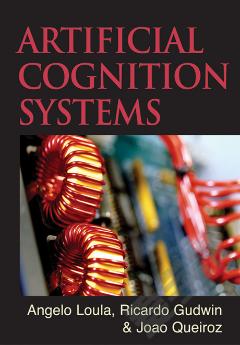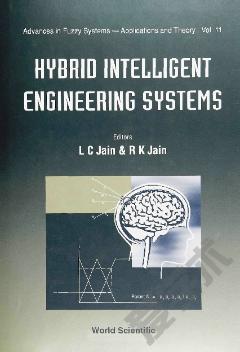Joint Cognitive Systems —— Foundations of Cognitive Systems Engineering
----- 联合认知系统:认知系统工程基础
PREFACE THE DRIVING FORCES Introduction On Terminology Computerization and Growing Complexity Self-Reinforcing Complexity Cycle Complexity and Unpredictability Conspicuousness of the Human Factor The Constraining Paradigm Input-Output Models The Shannon-Weaver Model Communication Model Prototypical Information Processing From Human-Machine Interaction to Joint Systems The Cognitive Viewpoint The Classical Human-Machine View The Disintegrated View Changing the Paradigm Definition of a Cognitive System The Scope of CSE THE EVOLUTION OF WORK Technological Systems as Amplification 'Examples of Amplification Amplification of Control Effects of Amplification Amplification and Interpretation Tools and Prostheses A Short History of Human-Machine Interaction The Conspicuousness of Cognition Changing Balance Between Doing and Thinking Loss of Work-Specific Information The Law of Requisite Variety Models of the Human as Controller The Joint Cognitive System (JCS) Control and Cognition Disjoint and Joint Systems Amplifying the Ability to Control THE BASICS OF A SCIENCE Model-Classification-Method Requirements to Measurements Theory-Driven Measurements Theory-Begging Measurements The Meaning of Measurements The Elusiveness of Cognition Cognition in the Mind Cognition in the Wild The Focus of CSE Cognition and Context Cognition and Control Modeling Cognition and Context Sequentiality in Reality and in Models The Threads of CSE Coping With Complexity Use of Artifacts Joint Cognitive Systems Merging the Threads COPING WITH COMPLEXITY Introduction About Coping Sources of Complexity Losing Control Lack of Time Lack of Knowledge Lack of Readiness or Preparedness (Competence) Lack of Resources Coping Strategies Information Input Overload Information Input Underload Designing for Simplicity Simplicity-Complexity Trade-Off Information Structuring How Should the Interaction Be Designed? Designing for Complexity Support for Coping Time Predictability Summary USE OF ARTIFACTS Introduction Phenomenology of Coagency Tools and Prostheses Artifacts in CSE Range of Artifacts Cognitive Artifacts The Substitution Myth Consequences of Technology Change Traffic Safety Typical User Responses to New Artifacts Failure Modes of an Artefact The Accidental User User Models and Accidental Users JOINT COGNITIVE SYSTEMS Introduction On the Nature of System Boundaries Automation and Joint Cognitive Systems Degrees of Human-Machine Dependency Automation Philosophies Ironies of Automation Lesons of Automation Function Analysis and Goal Achievement Goals and Means Simple Test-Operate-Test-Exit (TOTE) Recursive Goals-Means Descriptions CONTROL AND COGNITION Introduction Feedback and Control Feedforward and Control The Substance of Modeling Cognition Cognition Without Context Cognition in Context Mental Models and the Law of Requisite Variety COCOM-Contextual Control Model Model Constituents Control Modes ECOM-Extended Control Model Tracking Regulating Monitoring Targeting ECOM Structure and Parameters Interaction Between Loops Modeling the Loss of Control TIME AND CONTROL Orthodoxy in Modeling Model Minimization Two Neglected Issues Modeling Control Predictability Available Time The Modeling of Time Representation of Time in COCOM Time and Control Modes How to Enhance Control Technological and Organizational Solutions Human Solutions Conclusions CSE AND ITS APPLICATIONS What Should CSE Be About? Extensions to Human Factors/Ergonomics Design of Work (Cognitive Task Design) Making Work Easy Making Work Safe Problems in the Design of Work Control Rooms Adaptation Decision Support The Last Words BIBLIOGRAPHY AUTHOR INDEX SUBJECT INDEX
{{comment.content}}








 京公网安备 11010802027623号
京公网安备 11010802027623号